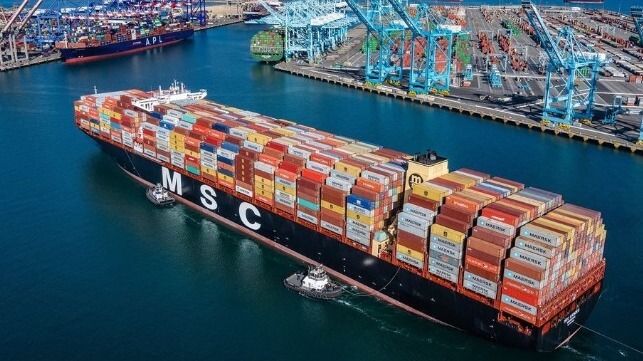Expectations that Pacific Container Trade Will Remain Down till Q2'23

Recent trends for softer cargo volumes at the Southern California ports continued in November. Both the ports of Los Angeles and Long Beach, however, believe that it is a temporary slowdown partially due to market conditions and in part operational uncertainties largely related to the unresolved labor issues. Their forecast however is for a soft start to 2023 which was confirmed by the shipping industry.
“Clearly it is a weaker second half than many would have predicted,” said Gene Seroka, Executive Director of the Port of Los Angeles reporting November results. While the port remains on track for its second-best year ever at nearly 10 million TEU, Seroka said that between August and November they had experienced a 21 percent decline in cargo volume at the Port of Los Angeles. He pointed to an overall slowing of U.S. trade and specifically a 12 percent decline year-over-year in imports as retailers eased factory orders.
The Port of Los Angeles experienced a 21 percent over-over-year decline in container volume to 639,344 TEU which they also highlighted was 24 percent below the port’s five-year average. Imports were off by 24 percent, but exports were up by 9 percent. That, however, is still 34 percent below the port’s five-year average for export volumes.
Long Beach reported a similar level of decline for November. Imports were also off 21 percent at the neighboring port while overall volume was also down 21 percent. Unlike Los Angeles, Long Beach also had a nearly 14 percent decline in exports.
The two ports cited similar reasons for the continued soft volumes. Executives at Long Beach highlighted reduced orders from retailers, full warehouses, and vessel transfers between the San Pedro Bay ports and goods shifted toward seaports along the East and Gulf coasts. Los Angeles said two factors have had “big impacts,” citing the early peak season primarily for retail imports and its belief that the prolonged labor talks are causing shippers and carriers to divert to other ports. Los Angeles for example reported that it had 13 blanked sailings in November and it is forecasting carriers will blank a further 11 sailings in December.
“We have work to do moving forward,” said Seroka saying they were focused on bringing cargo back to Los Angeles. He said the first key piece was a settlement of the longshore workers' labor negotiations which he expects will happen in early 2023.
“While some import volume has shifted to other gateways, we are confident that a good portion of it will return to the San Pedro Bay,” said Port of Long Beach Executive Director Mario Cordero. “As we move toward normalization of the supply chain, it’s time to refocus our efforts on engaging in sustainable and transformative operations that will secure our place as a leader in trans-Pacific trade.”
Yet the outlook for the remainder of 2022 and possibly the first quarter of half of 2023 is weak. Jeremy Nixon, CEO of Ocean Network Express highlighted that they expect an early and prolonged impact from the Chinese New Year holiday in January 2023. He forecast that February, March, and April would be slow for volumes from Asia to California.
“We are expecting 15 to 20 percent negative growth rates compared to last year,” predicted Nixon. He noted that it would mean a leveling off based on the similar positive growth levels last year. He said ONE would continue to blank sailing to match demand saying like most carriers they might operate only 50 percent of service around the Chinese New Year, bringing capacity back only as demand builds. He, however, said that he believes that sport freight rates are likely bottoming out now which would be a longer-term positive for the market.
The expectation is that normality could return to the trans-Pacific trade and Southern California ports in the second quarter and beyond in 2023. However, it will be dependent on retailers bringing down their current inventory levels before they resume higher import levels.
